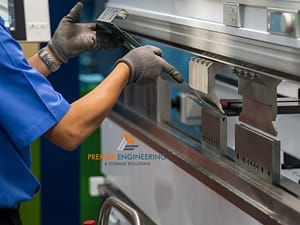Acrylic sheets, known for their versatility and durability, have become an integral material in the medical and scientific industries. These sheets are made from polymethyl methacrylate (PMMA), which boasts properties that are highly valued in these fields, such as clarity, strength, and ease of fabrication.
In the medical field, where precision and reliability are paramount, the material’s properties significantly contribute to the development and manufacturing of a wide range of medical equipment. The ability to withstand rigorous use and maintain hygienic standards makes acrylic a go-to choice for medical applications.
Advantages of Acrylic Sheets in Medical Devices
Durability and Impact Resistance
Acrylic sheets offer impressive durability and impact resistance, which are essential qualities in the bustling environment of healthcare facilities. Unlike glass, acrylic is shatter-resistant, reducing the risk of injury and contamination, a vital consideration in medical settings. This resilience ensures that devices made from acrylic can endure the daily stresses of medical use without compromising patient safety or device functionality.
Resistance to Chemicals
In environments where sanitation is critical, acrylic’s resistance to a wide array of chemicals makes it an excellent choice for medical devices. Acrylic can withstand repeated cleaning with disinfectants and sterilization agents without degrading, ensuring devices remain hygienic over their service life. This chemical resistance also means that acrylic is less likely to become brittle or discolored, properties especially valued in medical device manufacturing.
Optical Transparency
The high optical clarity of acrylic sheets allows for the creation of transparent medical devices where visibility is crucial, such as incubators and IV screens. This transparency is akin to that of glass, yet acrylic offers a more lightweight and impact-resistant alternative. In medical applications where monitoring patients through protective barriers is necessary, the clear visibility provided by acrylic is unmatched.
Acrylic’s Role in Medical Manufacturing
Typical Uses in Medical Devices
Acrylic’s unique properties have led to its adoption in a variety of medical devices. From diagnostic equipment enclosures and surgical instrument handles to viewing panels on medical machinery, acrylic sheets are commonly found throughout medical facilities. Their ease of cleaning and ability to be sterilized align perfectly with the hygiene standards required in medical device manufacturing.
Design Flexibility
The flexibility in design that acrylic offers allows for custom solutions to meet specific medical needs. Acrylic can be easily cut, shaped, and molded into complex forms, making it ideal for custom medical components. This adaptability not only meets the exacting specifications of medical devices but also enables rapid prototyping and customization for specific medical applications.
Regulatory Standards
Acrylic sheets meet stringent regulatory standards required for medical-grade materials. They are compliant with certifications that attest to their safety and suitability for use in medical environments. This compliance provides manufacturers with the confidence to use acrylic in a range of applications, knowing that the material aligns with health and safety regulations.
Sanitation and Sterilization Compliance
Cleaning and Disinfecting
For medical environments, maintaining the highest level of hygiene is imperative, and acrylic sheets are up to the task. When cleaning and disinfecting, use non-abrasive cleaners to maintain the sheets’ clarity and integrity. A solution of mild soap and water, applied with a soft cloth, is effective for regular cleaning. For disinfecting, most common non-solvent based disinfectants are safe for use on acrylic sheets. It’s essential to avoid ammonia-based products, as they can cause clouding over time.
Sterilization Techniques
Acrylic sheets can withstand various sterilization techniques, including ethylene oxide gas and gamma radiation, making them suitable for reuse in medical settings. It’s important to note that while acrylic can tolerate these sterilizing processes, it may not be suitable for autoclaving, which involves high-temperature steam, as it could cause warping or deformation.
Long-Term Maintenance
Repeated cleaning cycles can take a toll on materials. To ensure the longevity of acrylic sheets, it’s recommended to polish the surfaces periodically with a specialized acrylic cleaner that can help restore luster and clearness. Also, it’s crucial to promptly address any deep scratches or damages, as these can harbor bacteria and compromise the material’s sanitary properties.
Overcoming Challenges
- Addressing Limitations: While acrylic sheets are versatile, there are scenarios where they may not be the best fit, such as in applications requiring autoclaving or exposure to strong solvents and acids. In such cases, alternatives like polycarbonate may be used, as it can withstand higher temperatures and has a different chemical resistance profile.
- Economic Analysis: Despite the higher upfront cost compared to some other plastics, acrylic’s durability and longevity often translate to cost savings over time, as it requires less frequent replacement. When considering the economic aspect, it’s beneficial to look at the total life-cycle cost of the material, including maintenance, replacement, and disposal costs.
Future Developments and Sustainability
- Technological Advancements: The future of acrylic in medical devices looks promising with technological advancements. Innovations in manufacturing techniques could lead to enhanced properties, such as increased resistance to high temperatures or more robust chemical resistance, which would broaden the scope of acrylic applications in the medical field.
- Environmental Considerations: As the medical industry becomes more conscious of its environmental impact, the recyclability of acrylic sheets is a significant advantage. Efforts are underway to improve recycling processes for acrylic, aiming to reduce waste and encourage the reuse of materials. By focusing on the sustainability of the materials used in medical devices, the industry can minimize its environmental footprint.
Acrylic Sheets in Laboratory Settings
Safety and Reliability
In laboratory environments, the need for non-reactive and safe materials is paramount. Acrylic sheets offer a non-porous surface that does not react with most chemicals and is resistant to contamination. This makes them an excellent choice for a variety of laboratory applications, including protective shields, specimen containers, and viewing panels for equipment. The inert nature of acrylic ensures that it does not interfere with the chemical reactions or processes being studied or conducted within the lab.
Custom Fabrication
Acrylic’s versatility allows for its fabrication into a myriad of shapes and sizes, tailored to fit specific laboratory needs. Whether it’s for custom storage units, display cases, or intricate parts of lab apparatus, acrylic can be easily cut, bent, and joined, providing custom solutions that meet the precise demands of laboratory settings. Its adaptability enables labs to design setups that are both functional and conducive to the scientific work being undertaken.
Acrylic Use in Prosthetics and Orthotics
Biocompatibility
Acrylic is well-suited for use in prosthetics and orthotics due to its biocompatible nature, meaning it is non-toxic and not prone to cause a biological response when used in or on the human body. This property is essential for materials that are in close or direct contact with skin or tissues, ensuring the safety and comfort of patients relying on prosthetic or orthotic devices.
Innovative Designs
With the ability to mold acrylic sheets into complex shapes, they are being increasingly used to create prosthetic components and orthotic supports that require a precise fit. The material’s molding capabilities allow for the design of ergonomic devices that conform comfortably to the wearer’s body, providing support while enhancing mobility and functionality. This innovation in design is particularly important in custom prosthetics, where a tailored fit is crucial for the device’s performance and the user’s comfort.
Conclusion
Throughout the discussion, the benefits and critical importance of acrylic sheets in medical and scientific applications have been evident. From their impact resistance and chemical compatibility in laboratory settings to their biocompatibility in prosthetics and orthotics, acrylic sheets have proven to be an invaluable asset in healthcare and research.






